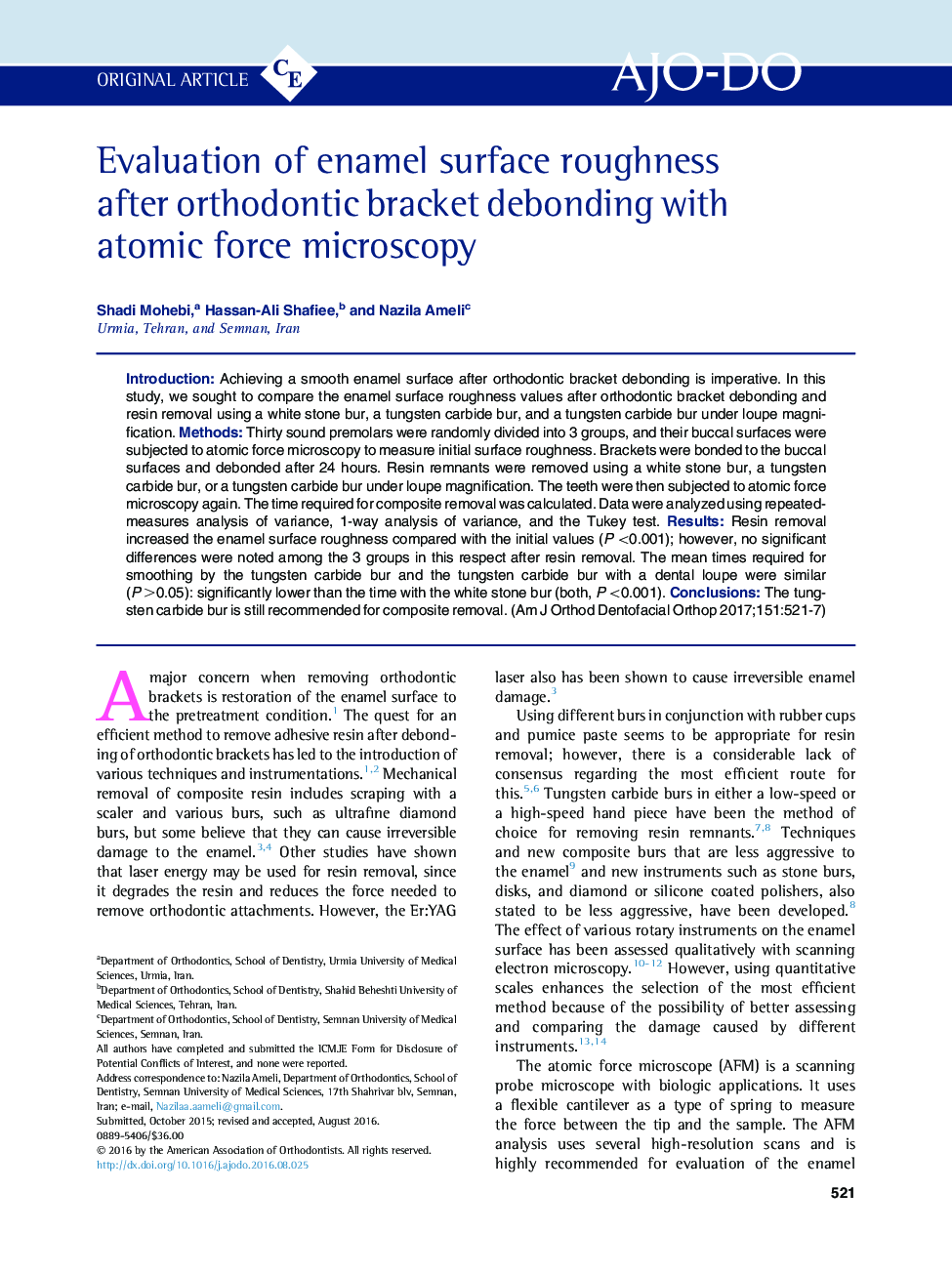| Article ID | Journal | Published Year | Pages | File Type |
|---|---|---|---|---|
| 5637721 | American Journal of Orthodontics and Dentofacial Orthopedics | 2017 | 7 Pages |
â¢We compared enamel surface roughness after bracket debonding using 3 methods.â¢Resin removal led to increased enamel surface roughness.â¢No significant differences were noted in surface roughness with different burs after resin removal.â¢Significant difference was observed in the time required for enamel smoothing among various burs.
IntroductionAchieving a smooth enamel surface after orthodontic bracket debonding is imperative. In this study, we sought to compare the enamel surface roughness values after orthodontic bracket debonding and resin removal using a white stone bur, a tungsten carbide bur, and a tungsten carbide bur under loupe magnification.MethodsThirty sound premolars were randomly divided into 3 groups, and their buccal surfaces were subjected to atomic force microscopy to measure initial surface roughness. Brackets were bonded to the buccal surfaces and debonded after 24 hours. Resin remnants were removed using a white stone bur, a tungsten carbide bur, or a tungsten carbide bur under loupe magnification. The teeth were then subjected to atomic force microscopy again. The time required for composite removal was calculated. Data were analyzed using repeated-measures analysis of variance, 1-way analysis of variance, and the Tukey test.ResultsResin removal increased the enamel surface roughness compared with the initial values (P <0.001); however, no significant differences were noted among the 3 groups in this respect after resin removal. The mean times required for smoothing by the tungsten carbide bur and the tungsten carbide bur with a dental loupe were similar (P >0.05): significantly lower than the time with the white stone bur (both, P <0.001).ConclusionsThe tungsten carbide bur is still recommended for composite removal.
